#3d ct modelling
Explore tagged Tumblr posts
Text
Top-Rated Robotic Knee Replacement Surgeon in India
At Saviour Hospital, our robotic knee replacement surgeon in India specializes in personalized surgical plans. Leveraging 3D CT-based modelling ensures optimal implant positioning and longevity. Our approach minimizes tissue damage, promoting quicker rehabilitation and better outcomes. Schedule your appointment now to regain mobility with confidence.
#robotic knee replacement#top knee surgeon India#saviour hospital#minimally invasive surgery#3d ct modelling#personalized surgical plan#knee implant longevity#advanced orthopedic care#quick recovery knee surgery#best knee replacement India#robotic assisted surgery#mobility restored#ortho surgery India#pain free living#regain mobility
0 notes
Text

Me putting the bad batchers into different video game franchises??? more likely than you think. Since you guys liked the Stardew Valley batch, I present to you Animal Crossing.
#star wars#starwars#tbb#star wars the bad batch#bad batch#clone force 99#tbb crosshair#crosshair tbb#ct 9904#animal crossing#custom animal crossing#the bad batch animal crossing#blender3d#3d model#sw#sw tbb#sw the clone wars#sw crosshair
72 notes
·
View notes
Text
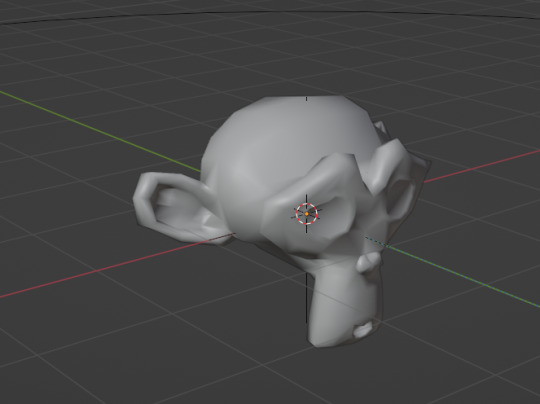
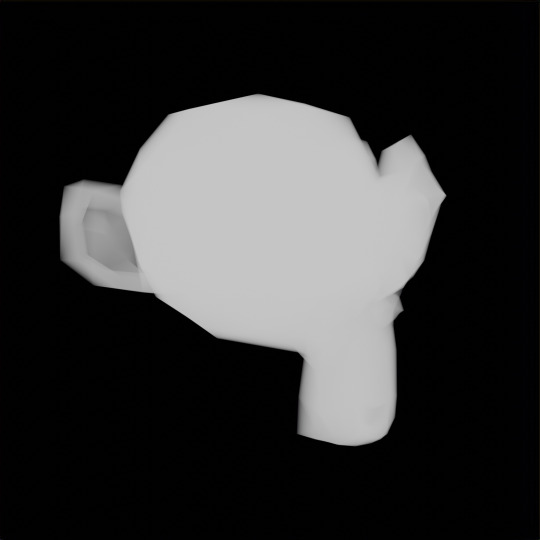
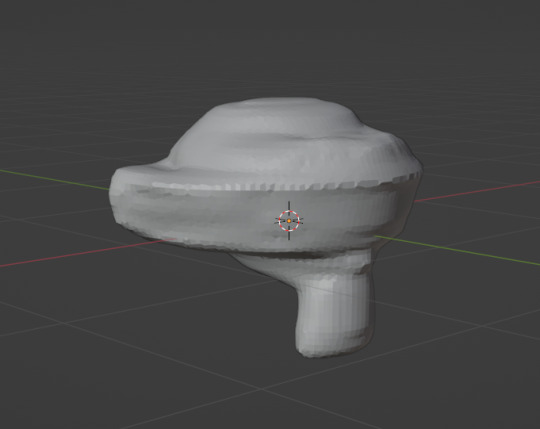
CT scanner in Blender almost working now.
Leftmost image is the source I'm using. Center image is the 'xray' image that I created from the source. With enough 'xray' images from different angles the source object should be recreatable, and that what the rightmost image is suppose to be.
My previous attempt used 250 cubes rotates around with volume shaders to produce a fog of the object. This causes some problems as the fogs dont really 'add' in blender and was hitting some limits in the depth cause not enough information to come through.
This new method uses geometry nodes. Instead of creating the fogs through the shader and rendering it is done using geometry nodes at runtime.

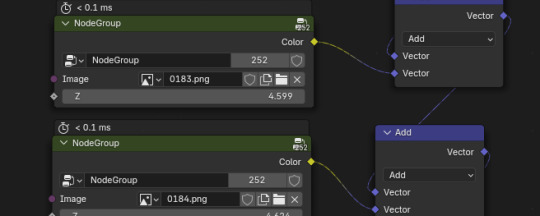

each node holds a small instruction set that adds the image at a small rotation. Each node was created by hand, as geo nodes scripting is a little different from shader nodes scripting and this process really wasnt that difficult to do (mostly just me remembering how many nodes I need to create as I can copy paste blocks).
With this being done in geo nodes I can also do more to the object. Something I see from CT scanners is slicing up the created object to view slices.
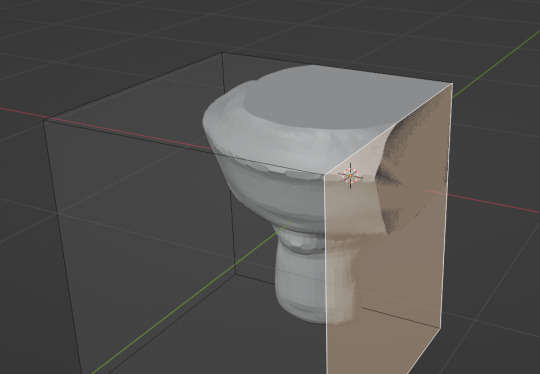
With geo nodes this is quite easy and in theory I should be able to start pulling internal data if I had any to begin with.
I think at this point its a problem with the 'xrays' I made. There should be a way to make them better as it was something I made in 20 minutes after a job interview about Tomography. But thats for later, my back hurts and I'm starting to see grid lines from all those nodes.
Shoutout to that one weirdo who told me to continue. You understand.
#blender#3d design#mathematics#b3d#3d model#3d modling#blender3d#geometry nodes#ct scan#computer graphics
6 notes
·
View notes
Text
Check this out! A free dataset for 3D scans of different specimens! They're still working on it, but how cool is that!?
3 notes
·
View notes
Text
I keep getting shuffled between projects that are honestly WAY above what I'm capable of doing atm and I really need to stop saying 'i'll figure it out!!
But there's another 2 years of college and if I don't constantly have a project or a problem to solve then I will begin to feel the passage of time by each agonizing second of this prolonged torment and I might kill myself! So we just have to keep going! :D
0 notes
Text

BIG NEWS: Apex is now on view at the Museum! Thought to be the largest and one of the most complete Stegosaurus specimens ever found, this 150-million-year-old fossil can now be seen in the Museum’s Griffin Exploration Atrium.
Apex will be studied as part of a new research initiative by scientists in the Museum’s Division of Paleontology focused on Stegosaurus biology, including the unique ornithischian dinosaur’s growth and life history. This work will require taking a small sample from a thigh bone of the specimen, which will become part of the Museum’s permanent scientific collection. All resulting 3D digital models, including the internal structures of its skull from new CT scans taken at the Museum, will be made available as a scientific resource for the wider community of researchers.
Photo: Alvaro Keding & Daniel Kim/ © AMNH
#science#amnh#museum#fossil#natural history#nature#animals#dinosaur#fact of the day#did you know#stegosaurus#museum of natural history#american museum of natural history#natural history museum#things to do in new york#nyc#things to do in nyc#research#science news#paleontology
548 notes
·
View notes
Text
Croc Paleontology Recap January 2025
The year has just begun and already we got a bunch of pretty neat new studies on fossil pseudosuchians so I'll just briefly go over them and unless I forget or end up procrastinating/getting too busy I'll hopefully be able to keep this going throughout the rest of the year.
Just to give you a brief overview, the highlights of this month include: salt glands in gavialoids, crocodilian predation on azhdarchids, diversifications and extinctions in thalattosuchians and a new species of aetoaur from India. Lets begin.
Evidence for salt glands in gavialoids
Starting off with something relating to the dispersal of gavialoids, we got "Evaluation of the endocranial anatomy of the early Paleogene north African gavialoid crocodylian Argochampsa krebsi and evolutionary implications for adaptation to salinity tolerance in marine crocodyliforms" by Pliggersdorfer, Burke and Mannion.
The title already gives a lot away, but the point was that Argochampsa, from the early Paleocene Ouled Abdoun Basin in Morocco, was examined for evidence of salt tolerance. Why? Because the dispersal of gavialoids remains weird. Both modern forms aren't especially keen on saltwater and are only known to consistently occur in freshwater (tho we have a recent example of an indian gharial caught in a fishing net off the coast of India), yet we have plenty of extinct gavialoids that either indicate that the group must have crossed oceans (see any "gryposuchine") or straight up lived at sea (also see some "gryposuchines").
Now, one such example might also be Argochampsa. Both because the Ouled Abdoul Basin famously preserves coastal deposits and because, at least following some phylogenies, Argochampsa might be closely related to the gharials of South America and today (others say its not even a gavialoid but lets ignore that for now). So all things considered one might expect marine habits from Argochampsa, yet so far no such adaptations could be identified. Well, Pliggersdorfer and co. analyzed a thus-far undescribed skull and actually managed to find something. Small depressions on the inside of the skull are suspiciously similar to ones seen in the extinct, fully marine metriorhynchoids, depressions that in the latter have been interpreted as having been left by salt glands. There is also some further evidence through the morphology of the inner ear.
This conclusion further extends to a handfull of other taxa, including the dyrosaurid Rhabdognathus and the recently named gavialoid Sutekhsuchus, and lends itself to the hypothesis that salt glands may have been ancestral to gavialoids, something I personally find unsurprising given their proximity to crocodyloids and their dispersal across the world (really if anything alligatoroids seem like the odd one out).
Fun fact, yours truly is featured in the paper in the form of two silhouettes.
Left: Argochampsa, illustrated by Seismic Shrimp/JW Right: Piscogavialis, perhaps the most famous marine gavialoid, illustrated by Joschua Knüppe


The brain of Paralligator
Second on our neat little list, the neuroanatomy of Paralligator, studied through CT scans and 3D modeling and published on in "Neurocranial anatomy of Paralligator (Neosuchia: Paralligatoridae) from the Upper Cretaceous of Mongolia". Given that I am not great with brain things, I'll keep this one short.
Now for those unfamiliar, Paralligator is part of a somewhat strange clade known as the Paralligatoridae, which contrary to their name are nowhere near real alligators (tho some do look deceptively similar). Instead, they are much more basal members of Eusuchia.
Measurements of the olfactory bulbs, responsible for the sense of smell, indicate that in Paralligator this sense was similarily developed to allodaposuchids and crocodilians, as is the inner ear who's anatomy suggests a semi-aquatic lifestyle. Paralligator does however differ in possessing a mesothemoid, a bony septum in the olfactory region that is also seen in dyrosaurids, baurusuchids and dinosaurs, but not modern crocodiles.

Borealosuchus remains from Colorado
Tho seemingly unexciting, this study, "First record of Borealosuchus sternbergii from thelower Paleocene Denver Formation (lower Danian),Colorado (Denver Basin)" actually helps us fill a neat little gap in our previous knowledge on croc survival across the Cretaceous-Paleocene extinction.
Simply put, though America's croc record across the KPG is rather remarkable, showing both many survivors and some incredible diversification after the impact, Colorado is kind of a blind spot, despite its potential importance. Perhaps one of the best examples of a survivor concerns the genus Borealosuchus, which is both geographically and stratigraphically widespread. To put things into perspective, this genus occured as far north as Canada and as far south as Texas, first appearing in the Late Cretaceous and dying out in the Eocene.
This paper now described several skulls from the Corall Bluff's locality of the Denver Formation, earliest Paleocene, that can be attributed to Borealosuchus sternbergii, definitively extending its range beyond KPG (granted, there are tentatively referred Paleocene occurences elsewhere), making it one of the largest suvivors of the mass extinction, with adults growing up to 2.3 meter in length. The specimens from Colorado are smaller, in the 1.5 to 1.7 meter range, but they are also regarded as immature individuals and are therefore also regarded as usefull in illustrating how the animals changed as they grew into adulthood.
This paper is especially well timed for those that follow @knuppitalism-with-ue 's Formation Stream series. As you might know, Corall Bluffs is to be drawn barely a week from now and this is a fantastic addition.
Left: Borealosuchus drawn by Atak_Draws Right: Distribution of Borealosuchus by Lessner, Petermann and Lyson 2025

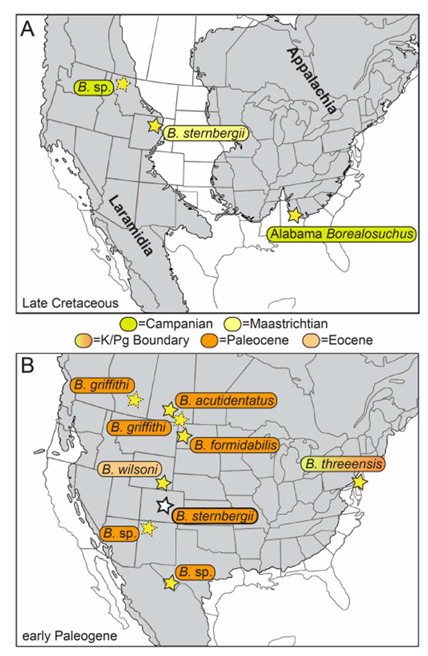
Growth of a peirosaur
Our next paper for discussion is "Life history and growth dynamics of a peirosaurid crocodylomorph (Mesoeucrocodylia; Notosuchia) from the Late Cretaceous of Argentina inferred from its bone histology" by Tamara G. Navarro and colleagues. This study conducted the first histology of peirosaurid limb bones, specifically of an indetermined taxon clading together with Uberabasuchus.
As a brief refresher, peirosaurids are a branch of medium to large sized Notosuchians that I personally think can be aptly described as appearing somewhat like scaly dogs or pigs with often robust, wedge-shaped heads and heavily armored bodies.
The results show that the animal had reached sexual maturity, yet was not yet fully grown. What's also noted is the exact growth dynamics of this animal. This is to say, the studied peirosaurid had overall slow growth with cycles of no growth whatsoever and two periods of increased growth, tho once put against other notosuchians the study deems the growth rates to be better described as "moderate". Pepesuchus meanwhile, belonging to the closely related itasuchids, was a fast grower. Extending things beyond their shared clade shows a virtual mish-mash of dynamics, with Araripesuchus buitreraensis displaying slow growth rates (yet Araripesuchus wegeneri having faster rates than the peirosaur), Iberosuchus showing slow rates, and Notosuchus displaying high growth rates (hell, theres even variation between individuals). A final point concerns the age of the individual, which is....contradictory. Based on the limb bones, the study estimates that the animal was at the very least 15 years old, but previous study of the osteoderms has yielded an estimated age of 18 years old. Ultimately, further study is needed, but it does clearly show how the histology of different parts of the skeleton varies.
Shown below, Uberabasuchus terrificus by Scott Reid

Predation on pterosaurs
Here's a fun one, "A juvenile pterosaur vertebra with putative crocodilian bite from the Campanian of Alberta, Canada", once again with a name that tells you very much what you're in for.
Brown and colleagues report on the discovery of a juvenile specimen of the azhdarchid Cryodrakon from the Dinosaur Park Formation of Alberta, Canada. The neck vertebra bears some conical bite marks, notably different from those of theropods, which generally have D-shaped or compressed tooth crosssections (sans spinosaurids, which aren't present). Champsosaurus is also ruled out due to its inferred feeding preferences, weak bite force and slender teeth. Mammals are potential candidates, but the team regards it as more likely that the trace maker was a crocodilian. Considering the fauna of the Dinosaur Park Formation, this would suggest the culprit was either Leidyosuchus, Albertochampsa or an animal described as "Stangerochampsa-like".
Now this is a very interesting, if not exactly unexpected interaction. On the one hand, having direct fossil evidence for this is a big deal, even if we don't know if the bite marks were left due to the pterosaur being actively hunted or if they were simply left when a lucky croc came across the carcass of an already deceased Cryodrakon. On the other hand, crocodiles and kin are notoriously opportunistic and broad in their diet, so one feeding on a pterosaur is something that seems like a no-brainer in principle, especially a relatively small individual with a wingspan of "only" 2 meters. This is further supported by the fact that crocodilian bite marks have also been reported from the Romanian pterosaur Eurazhdarcho.
Obvious difference in prey size and geography aside (and taxon names even within the chosen setting while we're on it), Prehistoric Planet really nailed the nailon the head with this one.
In the left corner, a juvenile Cryodrakton (art by Hank Sharpe). In the right corner, Leidyosuchus (art by Gunnar Bivens) LET THEM FIGHT (or scavenge)


Evolutionary trends and extinctions in Thalattosuchia
This one's a last minute entry, by which I mean this one got just published as I was about to wrap this whole thing up. "Analysing Thalattosuchia palaeobiodiversity through the prism of phylogenetic comparative methods" explores how the evolution and the extinctions of members of this group were shaped by both biotic and abiotic factors.
Given the shere breadth of this topic, a quick summary of thalattosuchia seems kinda in order. In short, thalattosuchians are a group of what are likely to be early crocodyliforms adapted to life at sea. They can be split into two groups, the teleosauroids, superficially gharial like animals that likely stuck to coastal waters, and the metriorhynchoids, open ocean animals with fluked tails, no body armor and paddle-like limbs. Both groups reached their greatest diversity in the late Jurassic, but managed to survive into the Cretaceous before disappearing entirely.
The study recaps that thalattosuchians first reach great diversity during the Toarcian, tho this is likely influenced by preservation bias thanks to Lagerstätten such as the Posidonia shale, and a later diversification takes place during the Bathonian. Regardless, the transition from the lower to middle Jurassic sees an increased trend in both thalattosuchian groups towards shorter snouts, which are associated with durophagy or hypercarnivory. This essentially gives rise to the teleosauroids of the Machimosaurinaei, which appear during the Bathonian and have blunt, robust teeth, as well as the metriorhynchoid Geosaurinae, which appeared at the same time and had ziphodont (serrated teeth). The reasons for this could be twofold. On the one hand, thalattosuchians were very abundant, so expanding into new nisches helped them coexist, with ecosystems preserving fish-eaters, hypercarnivores, durophages and more at the same time. More of an underlying factor could be a drop in ichthyosaur diversity, leaving plenty of open nisches for these crocs to fill.
Subsequently, during the transition from the Middle to Late Jurassic, there was another diversification event with both groups establishing new major clades, possibly associated with the warm temperatures of the Late Jurassic, before the diversity crashes with the onset of the Cretaceous. The authors note that this too might have been related to climate, with the Cretaceous survivors mostly being found in warmer waters.
Left: A Dakosaurus ambushing an ichthyosaur by Gabriel Ugueto Right: A large Machimosaurus rests on the beach as a sauropod approaches, art by Joschua Knüppe


and for the final study I wanna talk about
Kuttysuchus: A new Aetosaur from India
Now, by all accounts one might be surprised to see this just kinda thrown in at the end here rather than getting a dedicated post as I usually like to do with new forms. And truth be told, theres just not that much to say about "A New paratypothoracin aetosaur (Archosauria: Pseudosuchia) from the Upper Triassic Dharmaram Formation of India and its biostratigraphic implications".
Kuttysuchus is our first pseudosuchian to be described this year and to get things out of the way, its not super exciting in terms of material. Like some other recently named aetosaurs, Kuttysuchus is based entirely on a handfull of osteoderms. And there's nothing wrong with that, after all osteoderms are rather distinctive for these animals. It does however mean that the information we can get from them is a bit limited and thus makes it hard to really put together something engaging.
More interesting than the anatomy then is the range and its relationship to other aetosaurs. The fossils are known from the Dharmaram Formation of India, which you might recall is also home to the recently named Venkatasuchus. Both Venkatasuchus and Kuttysuchus are members of the Paratypothoracini, tho the former is significantly more derived and the latter more basal.
Fossil osteoderms of Kuttysuchus, all belonging to the central double row that stretches across the back.
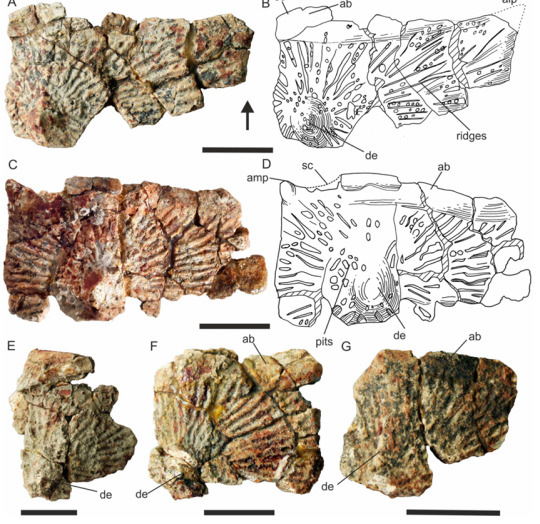
I'll be entirely honest. This was a lot more work to type out than anticipated, but admittedly also fairly rewarding. Hopefully you dear reader found it equally interesting, and hey, congrats on making it to the end.
#palaeoblr#paleontology#prehistory#croc#crocodile#long post#pseudosuchia#sutekhsuchus#argochampsa#peirosauridae#thalattosuchia#metriorhynchoidea#teleosauroidea#kuttysuchus#aetosauria#paralligator#leidyosuchus#cryodrakon#borealosuchus
142 notes
·
View notes
Text
CT Comic Page Progression bc Yes







Another one of my favorite pages. Lots of interesting angles and colors. I changed the ending panel at the last minute because drawing people is hard and I knew showing less would be more here :) I actually used a 3d shoe model to help with the reference.
Apparently this took me 7 hours according to Procreate 🌞 dang okay :')
#deltarune chara timeline#ask stuff#bread#deltarune#sketches#art progression#uhhh not sure how to tag this
240 notes
·
View notes
Text
My Art Process(Mostly Ben LOL):Stylization and Posing
My moot @softdrafts asked for some looks into how I stylize/get art down, and as someone who struggled with it for a while I thought I might as well make a full post going into as much detail as I can without it being a mess 😭. This will be split into two parts within the post, posing/anatomy, and stylization/how I got my artstyle to where it is now.
Posing/Anatomy/Getting a Sketch Down:
To be 100% truthful, I do still have a pretty difficult time with anatomy, and a lot of it is just— fuck around and find out LMFAO. One thing I will say is use references, if it's a pose you're already comfortable doing than that's totally fine, but if you're having any trouble with a pose, try to find a reference. This can be a photo, another art piece(though if you ref someone elses art thats not made as a ref please credit it🙏), or a 3D model, hell you can even take the photo yourself if you're having trouble finding a ref.
When it comes to getting a pose down, you're gonna want to work in simplified shapes, these could range from circles, to lines, to random blobs, as long as it helps YOU it's a valid baseline. I've found the shapes that help ME out the most, but you may have different ones for yourself. To give an example, I'll find a basic pose and break it down into the shapes so I can translate it onto paper.

(Working traditionally cause I don't wanna get on comp LMAO) *It's atp where I would make any transforming tweaks if I was working digitally, just anothing that I think looks off, whether it be a bit too big/small or at the wrong angle. Don't try to be too exact with it, that's how you end up with stiff poses, you can tell mine isn't exact, but it's got the basic shapes down. It's also atp that I start adding little details, just small thinks to mark specific spots, like the navel, I like to add a bit of details to the shoulders her, things that can make something that would otherwise look too flat start to come to life, even just a little. Here is where you can start using your ref very loosely, esp if your figure is going to be— yk, clothed lmao.

After the last step, I just start adding details, if I know that a certain area is gonna be covered by clothing I don't put *too* much detail into it, basic shapes but nothing thats gonna make you go :( when you have to cover it up. Remember that you can use more than just the body to show motion, objects in the photo, clothing on the model, hair, it moves with the figure, make use of it!
Reminder that this is *my* process, some people need more steps and that's okay! Sometimes working in smaller parts works for someone, while looking at the bigger picture works for others. I'd personally say start with the bigger picture and THEN move into details, focus on flow first and detail second or it may end up a little stiff.
Stylization/Finding your Artstyle(ft.Ben Pincus):
Another quick disclaimer, I am still working on my artstyle p much everyday, so what I say now might change tomorrow, but this is how I got to a point where I'm comfortable with my stylization. I also want to mention, stylization can be different based off characters, not just your artstyle as a whole, ex.I've been drawing Ben since CT dropped, I've drawn him 50+ times which is how I've been able to get where I am with him, vs a character like Kenji, who I've draw less than 10 times and am still working on how I draw him specifically.
But like, yeah, it's taken a while, example below lmao


Not only am I a lot more consistent with how I draw him now, but I also prefer how I draw him now (thank GOD) because he feels more on model wothout being an EXACT replica.
Overall, some of it IS my artstyle itself developing, while it's also me learning overtime what I like when it comes to drawing him. I kinda worked in steps, I realized that while I wanted his hair to be fluffier than in canon, I didn't want it THAT fluffy, I learned which shapes I liked to use for him, because once again, art at its core, is a buncha shapes, his bangs, his sideburns, his overall face shape, its all just ✨️shapes✨️.
I got a palette down for him next, having a palette really helps with consistency tbh, even when it comes down to things in their outfits, for example, I always like to use the orange from his shirt SOMEWHERE in his design if I can.
I think the major thing is his face, his features are the thing I struggled with the most, I had a lot of trouble combining his canon features with my style, but after studying a lot of screenshots, figuring out-once again-shapes, and how I wanted to translate them into my art, I got it down to a point I'm pretty comfy with. The first thing I got down was his nose, I've always loved his nose, plus I find that the nose can be the most important feature to make sure they look like themselves, I simpled it down to shapes(turn me saying shapes into a drinking game atp) for the most part its straight with a bump at the end, I emphasize the bump but it's still the basic shape.

Next was his brows, they're thick, but they're not super dark, I find that even a small detail like matching his brows to his hair rather than filling them in black already makes him look more in character. Then his eyes, they're round, but small, I won't lie i do just kinda go with the flow when im drawing his eyes, but for the most part I give him:Heavy eyelids, downturned corners of his eyes, and no extra lashes. His mouth is just—paper thin white boy lips and a tooth gap because I refuse to take that away from him.
Also do studies, this is the only photo I can come up with for a study, but here you can see my stylistic choices while also still keeping the ref photos in mind.

Once you get to a point where the important details/features look how you want, you can start adding extra details, I give Ben scars and moles, as well as darker freckles, I can add these extra things while having it still look like Ben because I've gotten the key details down. I also stylize his body, I give him bigger arms, make him beefier because— he deserves it man.
Tl;dr because my words became a mess at a certain point, find key details in the design, play around with them to suit your style while also keeping them on base (to your liking). Also. Shapes. Reference but remember to not be TOO focused on small details, more the big picture.
#ben pincus#jurassic world chaos theory#jurassic world camp cretaceous#my art#kinda#art tips#tagging the jw tags for those who have trouble drawing Ben ig LMAO#my words got real messy in the stylization part so like if u have any questions feel free to ask!#silas yaps
21 notes
·
View notes
Text
Now here’s a divine development.
Just ahead of the holidays, archaeologists have “digitally unrolled” a 1,800-year-old silver amulet to decipher an inscription that’s being hailed as the oldest known evidence of Christianity in Europe.
Authentic evidence of pure Christianity north of the Alps has never existed before now. And the findings have the potential to change holy history forever.
“It will force us to turn back the history of Christianity in Frankfurt and far beyond by around 50 to 100 years,” said Mike Josef, mayor of Frankfurt, Germany, where the artifact was exhumed.
“The first Christian find north of the Alps comes from our city,” added Josef. “We can be proud of that, especially now, so close to Christmas.”
The amulet housed a “wafer-thin” foil, measuring 1.4 inches, and featuring text referred to as the “Frankfurt silver inscription.”
It was found beneath the chin of a man’s skeleton at a burial site on the outskirts of Frankfurt in 2018. However, the ancient wording, dating back to between 230 and 270 — when the predominant religions in Europe were Judaism and paganism — has been virtually illegible until now.
Specialists from the Leibniz Center for Archaeology (LEIZA) used computer tomography (CT) scans to decode the 18-line engraving, which declares Jesus Christ the “Son of God.”
“In the name of Saint Titus. Holy, holy, holy! In the name of Jesus Christ, Son of God! The Lord of the world resists with [strengths] all attacks [or setbacks]. The God grants entry to well-being. May this means of salvation protect the man who surrenders himself to the will of the Lord Jesus Christ, Son of God, since before Jesus Christ every knee bows: those in heaven, those on earth and those under the earth, and every tongue confesses (Jesus Christ),” reads the translation, per DailyMail.
The deific discovery closely trails the recent decrypting of the Meggido Mosaic, a 1,800-year-old relic that says, “Jesus is God.” It also follows the July 2024 unearthing of a nearly 2,000-year-old manuscript that details the earliest known account of Christ’s childhood.
To crack the code on the Frankfurt silver inscription, which is written in Latin, LEIZA experts used sophisticated technologies on the extremely delicate scroll.
“The challenge in the analysis was that the silver sheet was rolled, but after around 1,800 years, it was of course also creased and pressed,” Ivan Calandra, an archaeologist at LEIZA, said in a statement. “Using CT, we were able to scan it at a very high resolution and create a 3D model.”
The pros reportedly placed individual segments of the scan together, piece by piece, until most of the words were visible.
However, there are said to be a few gaps in the text — which is being dubbed “purely Christian” as it spotlights Jesus Christ and Saint Titus, a missionary and church leader, but avoids pagan themes as well as elements of Judaism.
Professor Markus Scholz, an archaeologist from Goethe University in Frankfurt, helmed the deciphering efforts.
“I called in experts from the history of theology, among others, and we approached the text together, piece by piece, and finally deciphered it,” said Scholz, who was surprised that the etchings were in Latin.
“Such inscriptions in amulets were usually written in Greek or Hebrew,” he noted.
And while little is known about the man who was buried with the amulet, scientists reportedly believe that he was a devout Christian — although believers of the faith were still subject to persecution at the time of his death.
According to insiders, the late Jesus-lover likely wore the amulet on a cord around his neck for protection before transitioning into the afterlife. His grave also boasted an incense bowl and a jug made of fired clay.
Researchers consider him the “first Christian north of the Alps,” and speculate that there could be more historical, untapped Christian burial sites around Europe.
“This extraordinary find affects many areas of research and will keep science busy for a long time to come,” said Ina Hartwig, Frankfurt’s head of culture and science.
“This affects archaeology as well as religious studies, philology and anthropology,” she continued. “Such a significant find here in Frankfurt is really something extraordinary.”
#nunyas news#well that's all kinds of cool#doen't upend a thing either#just confirms what we already know
37 notes
·
View notes
Text
I'm so fucking excited. Last study visit I asked the study guys if they were able to answer some questions yet -- it was mostly about stage 1 stuff, like "So which part of my brain made my hands buzz when you stimulated it?", which they previously declined to answer in case the information placeboed me somehow. We're long past the point any of the things I was wondering about could matter, though.
They briefly consulted with each other about it, and then they said that next visit they'd have a presentation for me about these things. A fucking presentation! Clearly some of them are nerds who were waiting for an excuse to do something like this.
They also mentioned a "glass brain", which sounded a lot like a 3D model of where all those SEEG electrodes went. I've seen the fluoroscopy and CT slices, so it's not exactly a mystery to me, but still.
That should be this Wednesday. This is going to be so cool. I hope I'm permitted to record it because there are a lot of people I'd love to show that to.
16 notes
·
View notes
Text
quick warning: i dont support the creators of dandys world and their actions (roxs (allegedly) EXTREMELY questionable actions towards minors, the (alleged) censorship of people talking about roxs actions in their discord server, and their (alleged) constant downplaying of the controversy just to name a few), i just like the game, thats it
also third batch!!! i think im gonna make fully rendered art of them eventually or 3d models if im bored enough, i kinda miss the 50 hours id spend making the lineart and shading ngl
first batch , second batch , LAST BATCH


o yea and i gave some of them new abilities cuz i felt like it and sometimes their design was fundamentally different enough from the original that itd be better to have new abilities than try to figure out how the redesign would use their canon ability (like redesigned toodles), if i dont mention an ability thats kept in the redesign its probably been replaced with another one, and im calling canon twisteds by CT!(name) and the redesigned twisteds by RT!(name)
twisted toodles: third worst jumpscare
- Can now see as far as CT!Pebble can. As slow as CT!Finn when roaming, but rolls REALLY fast like a bowling ball when chasing. The rest of her stats are the same.
- A little bit before her roll starts, she splashes some ichor on the ground near the player (to basically tell them the direction of her roll). It's close enough that they'll be able to see it even in a blackout without light upgrades, but far enough that you'd have to pay a bit of attention to notice it.
- When she's chasing a player but ends up going out of a specific range from them (the range is a VERY big circle), she stops, repositions herself really fast and rolls again to run over the player. If she hits a player, she keeps rolling until she hits a wall. Then, when she hits a wall she immediately loses aggro, gets blinded and can't move for like 2 seconds before getting back up to roam again. If she doesn't hit a wall while she's chasing a player, she keeps rolling.

twisted tisha: figure from doors real
- She's slower than average now. She still cleans floors, but now she cleans ceilings too!! The rest of her stats are the same.
- Can extend her legs really far, to the point where she can touch the ceiling with her hands. Leading to her being able to look above walls and down at you.
- She can now feel the vibrations your footsteps make as long as you're near her, even when you're walking and she's really high up. She won't attack you immediately, she'll just pause her cleaning for a bit and look in the direction of the vibrations (there's a short delay between her noticing the vibrations and her looking). If she sees you, she'll start chasing you like a normal twisted while retracting her legs to be at her normal height.

twisted teagan: more dangerous than twisted shelly (oops)
im splitting this into 3 parts for each character in the tea set
disurf
- Is as fast as CT!Toodles but is always hiding in a corner.
- Runs away from players when RT!Teagan starts attacking, bringing RT!Teagan with her to hide in another corner. Disurf actively dodges players as much as she can while still keeping her speed, so she sometimes ends up running into players making them lose a heart. Disurf keeps running away until her attention span runs out, at that point she's gonna start looking for the nearest corner to hide in.
teagan
- Her line of sight defaults to where Disurf's line of sight is. When Disurf sees a player, RT!Teagan looks in the same direction as her for like 1 second. If RT!Teagan doesn't see anyone, she goes back to her default line of sight.
- Only attacks when she has direct line of sight with a player. She attacks by throwing twisted Cupbits at you. You can dodge them by hiding behind walls, or, if she's far enough, by stepping aside so that the Cupbit flies past you.
cupbits
- They're average speed, never break when thrown, and have a shorter than average attention span. They have no special abilities, only a regular attack.
- They die after 7 seconds by falling apart and turning into pure ichor, then that ichor gets smaller and smaller and disappears. There's no limit on how many twisted Cupbits can be spawned at once.
AND:
- They're a hivemind, if one of them sees you, all of them do. When you get seen by one of them:
All twisted Cupbits have their attention spans refreshed, but only if the player that was seen is the same player they're chasing.
- Disurf will avoid running in your direction and will instead do a full 180 and run the other way (even if there's players in that direction).
EVEN LONGER RANT UNDER CUT but i explain my twisted designs, the actual reasons to y i dont like the canon designs, and other shit i guess idk (in that order)
my twisted design process (for all twisteds):
i realllly didnt like the way i handled the twisted designs in literally every single one of my redesigns (except for poppy, box and lamp i guess??) so i made some rules for how to make them so its not just "make them big and sharp and splash them with ichor", its canon divergent yes but its really cool i think so its staying:
the twisted versions of every character are mutated versions of themselves that lean so very hard into their main personality trait or role in a very negative way, to the point that theyre almost like mean-spirited parodies of themselves (carries over to how their special twisted abilities work too), theyre waay more likely to get violent too (u kno, so that theyre twisted versions of themselves)
patches of ichor appear at spots that changed from the original design (the ichor comes first, then the mutations), or their clothes absorbed it cuz the ichor kinda acts like water that makes worse stains, or they got filled up by ichor in some way
i headcanon that these versions of the twisteds would sometimes reenact episodes from the tv show or some of the routines theyd go through while the place was still running, but waaaaay more tense and sometimes depressing cuz of their mutations and very big personality shift
most likely reasons to y i rlly dont like the canon designs:
i looked at some more fanart and i legit cant tell if i actually dont like the character designs or if i just dont like the games artstyle wat the hell ;-; LIKE THEY LEGIT LOOK PRETTY GOOD WHEN OTHER PEOPLE DRAW THEM!!
BUT I FINALLY FOUDN THE WORDS TO PROPERLY EXPLAIN Y I AHTE THE CANON DESIGNS SO MUCH!!! its cuz a lot of them feel very lazy and generic, like the only thing making them stand out is the fact that theyre a dandys world character and not just a character, like theyre simple yes thats cool and that works really well for a character like pebble and sprout, but most of them are TOO simple cuz they usually have like only 1 range of color in their design (tisha is blue to white, brightney is dark red to white, shelly is brown to cream, while sprout is red to white and green, and rodger is black to brown and purple)
but some of them have things in their design that just dont work (finn, poppy, brightney), maybe its cuz stuff are in bad places (poppys bow on her head) or they just dont look good (finn), wat makes this even worse is that some characters like tisha and brightney and shrimpo have patterns to try and make their design more interesting i gues?? but it just doesnt work and genuinely makes it feel more generic :(
so i think the real problem with dandys worlds designs is a few things:
1. that theres not enough diversity in their colors if u get wat i mean, like seriously most of the skins do this (having different colors to make sure not everything is visually samey)!!!
imo the biggest example of "not enough color diversity" is vee and astro and their skins, like they look SO MUCH BETTER when theyre not just "green, black" and "purple to cyan, black, white" (i wouldve put teagans skin in here too if there was just slightly more yellow), it doesnt even have to be colors that are on the opposite sides of the color wheel, just visually pleasing color combos!!!
2. just better structuring (if thats wat u call it) i guess??
like finn, yes his character design fits the having enough color diversity problem, but it just doesnt work, i think its cuz of how saturated the cyan and orange are, making them not mesh well together, like if the orange was a darker less saturated color then maybe the colors could work, but it could also just be his clothes, like switch out his life vest for anything else thats related to marine stuff (maybe a swimsuit with flipper feet??) and his pants for something darker
3. not following their theme very well, or theyre pretty lacking in roles so their theming is very vague
i think shelly is the biggest example of this, like why is she a shell, i get that shells can be fossils too but honestly just make her a skeletal dinosaur at that point or one of the many modern descendants of dinosaurs (like birds and crocodiles and turtles), her twisted design is rlly good tho!!! its my favorite design in the entire game and its honestly the coolest one too
and now for 3 characters that i think have problems in most of these (that i havent already mentioned):

glisten is an example of another color problem that i didnt mention cuz i felt like this was a problem that only glisten had, the colors not being the right color (idk how else to name it ;-;), he looks SO GOOD in fanart but hes just meh in the official game even when compared to his original picture as a dhmis oc, and im pretty sure its cuz the pink parts of his design arent saturated or dark enough, leading to the yellow parts of his design blending in more easily with the bow (look at the black and white version as a reference on that, the brightness of the pink and yellow are very close to each other meaning ud have a harder time trying to tell them apart, its easier to tell when colored yes but their brightness still carries over leading to some color blending (idk another word for it srry), not as much blending as in the black and white version but still a subtle detail u could pick up on), and his blush, im gonna be honest with u i just think it looks bad and i dont even know y, just eyeshadow would look waay better
boxten oh god, they do kinda follow the color diversity thing but the way hes designed is just not it, he doesnt come off as shy in his design or the dialogues i saw or even animation, hes more of a softie than anything, i only knew that he was shy when i read his info card
poppy follows the color diversity thing the most imo, pink cyan and yellow are colors that i think work really well together, but the structure of her design and how well her design fits her role doesnt work either, actually im pretty sure i fixed her design structure in my second redesign (second batch) of her, all i did was move the bow from being weirdly placed on her head to being tied around her waist like glisten and mess around with the colors, now with her design fitting her role, i think the bubble is a good choice!! it fits playful way better than energetic i think but it still works, my only problem is with her clothes, it does not give off energetic vibes, i honestly think shed have a better design if she wore the clothes professional tag players and maaaybe mountain bikers wear
other shit idk:
honestly i wanted to include all the mains here too (as of writing, shelly has a complete redesign (more changed than the lamp) and vee and astro are just light redesigns, im not done with sprout and im never redesigning pebble hes already perfect) but the release date for the new update dropped as soon as i was gonna start digitizing the twisted tea sets design, actually i think i went overboard on like ALL of the redesigns to the point where i should prob start calling them rewrites or very loosely inspired instead, oops i did NOT mean to do that
also i just recounted the total characters, theres only 21 of them how the fuck did i get 22 last time???
#my art#redesign#dandys world#dandys world glisten#dandys world toodles#dandys world tisha#dandys world teagan
20 notes
·
View notes
Text
How to know if a USB cable is hiding malicious hacker hardware
Are your USB cables sending your data to hackers?
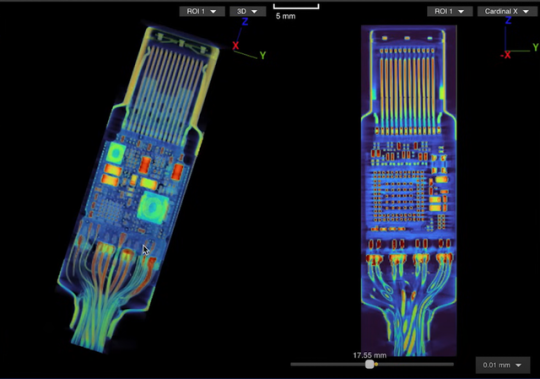
We expect USB-C cables to perform a specific task: transferring either data or files between devices. We give little more thought to the matter, but malicious USB-C cables can do much more than what we expect.
These cables hide malicious hardware that can intercept data, eavesdrop on phone calls and messages, or, in the worst cases, take complete control of your PC or cellphone. The first of these appeared in 2008, but back then they were very rare and expensive — which meant the average user was largely safeguarded.
Since then, their availability has increased 100-fold and now with both specialist spy retailers selling them as “spy cables” as well as unscrupulous sellers passing them off as legitimate products, it’s all too easy to buy one by accident and get hacked. So, how do you know if your USB-C cable is malicious?
Further reading: We tested 43 old USB-C to USB-A cables. 1 was great. 10 were dangerous
Identifying malicious USB-C cables
Identifying malicious USB-C cables is no easy task since they are designed to look just like regular cables. Scanning techniques have been largely thought of as the best way to sort the wheat from the chaff, which is what industrial scanning company, Lumafield of the Lumafield Neptune industrial scanner fame, recently set out to show.
The company employed both 2D and 3D scanning techniques on the O.MG USB-C cable — a well-known hacked cable built for covert field-use and research. It hides an embedded Wi-Fi server and a keylogger in its USB connector. PCWorld Executive Editor Gordon Ung covered it back in 2021, and it sounds scary as hell.
What Lumafield discovered is interesting to say the least. A 2D X-ray image could identify the cable’s antenna and microcontroller, but only the 3D CT scan could reveal another band of wires connected to a die stacked on top of the cable’s microcontroller. You can explore a 3D model of the scan yourself on Lumafield’s website.
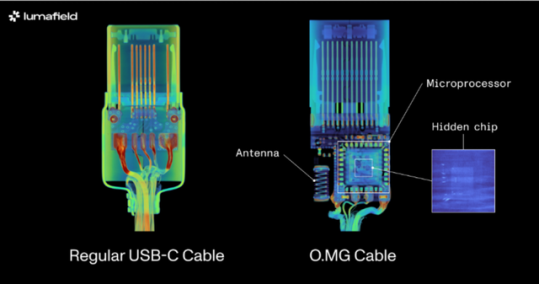
It confirms the worst — that you can only unequivocally confirm that a USB-C cable harbors malicious hardware with a 3D CT scanner, which unless you’re a medical radiographer or 3D industrial scientist is going to be impossible for you to do. That being so, here are some tips to avoid and identify suspicious USB-C cables without high-tech gear:
Buy from a reputable seller: If you don’t know and trust the brand, simply don’t buy. Manufacturers like Anker, Apple, Belkin, and Ugreen have rigorous quality-control processes that prevent malicious hardware parts from making it into cables. Of course, the other reason is simply that you’ll get a better product — 3D scans have similarly revealed how less reputable brands can lack normal USB-C componentry, which can result in substandard performance. If you’re in the market for a new cable right now, see our top picks for USB-C cables.
Look for the warning signs: Look for brand names or logos that don’t look right. Strange markings, cords that are inconsistent lengths or widths, and USB-C connectors with heat emanating from them when not plugged in can all be giveaways that a USB-C cable is malicious.
Use the O.MG malicious cable detector: This detector by O.MG claims to detect all malicious USB cables.
Use data blockers: If you’re just charging and not transferring data, a blocker will ensure no data is extracted. Apart from detecting malicious USB-C cables, the O.MG malicious cable detector functions as such a data blocker.
Use a detection service: If you’re dealing with extremely sensitive data for a business or governmental organization, you might want to employ the services of a company like Lumafield to detect malicious cables with 100 percent accuracy. Any such service will come with a fee, but it could be a small price to pay for security and peace of mind.
11 notes
·
View notes
Text
One minute you’re a kid sitting and staring at fish in the aquarium for hours on end
Next you’re taking CT scans of penguin tracheas to render a 3D model to make technology to teach vet students how to properly intubate penguins
#you ever have those moments where you just gotta stop and go#little me would be so excited to see me now#vet med#veterinary#marine biology
68 notes
·
View notes
Text
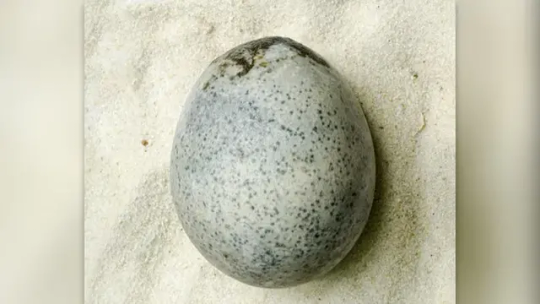
An Unbroken 1,700-year-old Roman Egg Found in England
A three-dimensional scan of a 1,700-year-old egg discovered at a Roman site in England reveals that, eggs-traordinarily, it still has the remains of a yolk and egg white inside.
It's thought to be the only time a centuries-old chicken egg found with its insides preserved.
"We were absolutely blown away when we saw the contents in there, as we might have expected them to have leached out," Edward Biddulph, a senior project manager at the private company Oxford Archaeology, told BBC News.
The egg was one of four found several years ago during an archaeological excavation of a Roman-era site in the central English town of Aylesbury, about 20 miles (30 kilometers) east of Oxford. Three of the fragile eggs fractured as they were unearthed, releasing a "potent stench," but the fourth remained intact.
Now, the surviving egg has been scanned at the University of Kent with microscopic computed tomography (micro-CT), in which many X-ray scans are compiled digitally to make a virtual 3D model. "It produced an amazing image that indicated that the egg, apart from being intact — which is incredible enough — also retained its liquid inside, presumably deriving from the yolk, albumen etc," as well as an air bubble, Biddulph said.
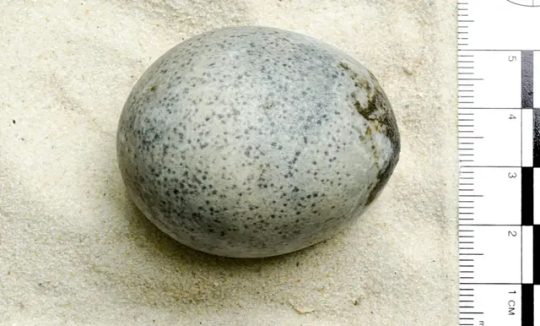
Roman eggs
The eggs were found in a waterlogged pit at the Aylesbury site, which was being excavated by Oxford Archaeology ahead of a housing development. The archaeologists found evidence of habitation there dating back to the Neolithic period, and the pit dated from the third century A.D., when England was a part of the Roman Empire.
According to a statement from Oxford Archaeology, the pit was first used for malting grain and brewing ale, but it was later filled with water and became a place where passersby could throw in coins and other items as offerings to the gods for good luck.
Organic objects usually rot away when exposed to oxygen, but here many were preserved by the waterlogged soil. As well as the eggs, which seem to have been an offering of some sort, the pit contained a wooden basket, leather shoes, and wooden vessels and tools.
Although Roman-era eggshells have been found before — often in graves, where eggs were thought to be suitable offerings — this seems to be the first time a complete Roman-era egg has been found in Britain. The only other Roman-era egg to survive intact was found in the hand of a dead infant buried near the Vatican, according to The History Blog. But it contained no liquids; archaeologists think it represented rebirth after the premature death of the baby.
The Oxford Archaeology statement noted that the Romans often ascribed symbolic meanings to eggs; they were associated with the gods Mithras and Mercury and had connotations of fertility and rebirth.
The intact egg from Aylesbury was taken to the Natural History Museum in London, where experts were consulted about how to conserve it without breaking it. Senior bird curator Douglas Russell told BBC News that the museum had a collection of mummified bird eggs excavated from the catacombs of sacred animals in Egypt that might be older.
"However, this is the oldest unintentionally preserved avian egg I have ever seen," he said. "That makes it fascinating."
The egg is now back at a museum in Aylesbury, where archaeologists are trying to work out how to extract the contents without breaking the shell.
By Tom Metcalfe.

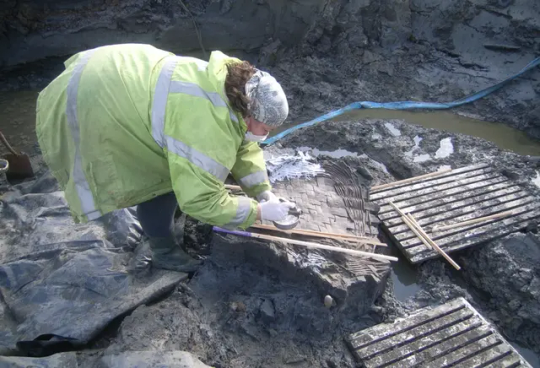
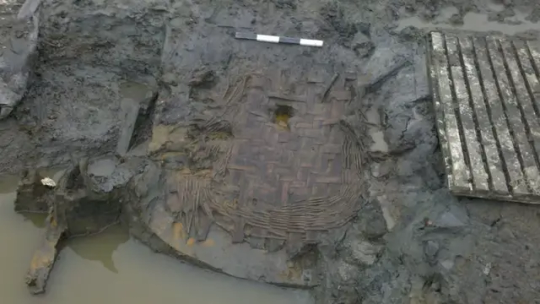
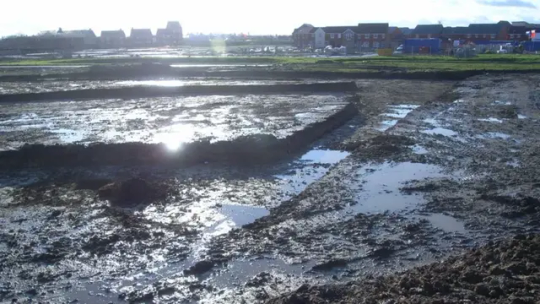
#An Unbroken 1700-year-old Roman Egg Found in England#Aylesbury#ancient artifacts#archeology#archeolgst#history#history news#ancient history#ancient culture#ancient civilizations#roman history#roman empire
36 notes
·
View notes